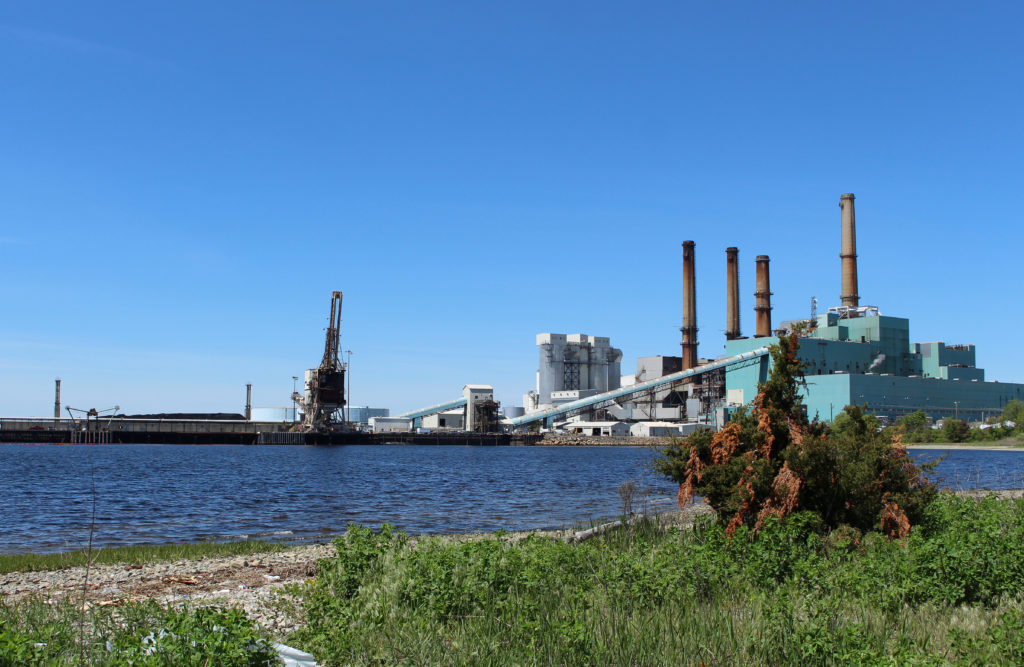
Brayton Point Station in 2017. Credit: Bethany Kwoka for CLF
It wasn’t long ago that Brayton Point Station in Somerset, Massachusetts, was the largest coal plant in New England. For 50 years, the plant spewed pollution into the air and water of the South Shore. But after extensive advocacy by CLF and its partners, Brayton Point emitted its last dirty breath in 2017.
Now, the newest owners of the site are tearing it down. They’re rebuilding and rebranding the site into the Brayton Point Commerce Center, designed to facilitate sustainable energy growth in the region. It’s proof positive that forward thinking advocacy works and can bring about positive change both for a specific site and for the region as a whole. It’s a sign that at least pockets of New England are ready to end their addiction to outdated, polluting fossil fuels and revel in the benefits of the clean energy economy.
A Quick History of Brayton Point
For years, CLF worked doggedly with many allies to shut down Brayton Point. Back in February 2013, CLF’s analysis of the plant showed that its financial future was bleak, so Dominion Energy’s decision in October of that year to sell the plant to energy investment company Energy Capital Partners came as no real surprise. The new owners quickly announced that the coal behemoth would close no later than June 2017, and on May 31 of last year it shut its doors for good – forecasting the end of dirty coal in New England.
With even the region’s largest coal plant unable to survive, the remaining plants are sure to follow. There are only a few of these dirty plants left, and Connecticut’s Bridgeport Station is already scheduled to close by 2021.
These closures come not a moment too soon. It’s past time for New England to step away from polluting fossil fuels like coal in order to avoid the worst effects of climate change. And the best way to do this is to embrace the benefits of clean energy.
Brayton Point Is Remade
While the large cooling towers at Brayton Point won’t be torn down until next spring, work has already begun to transform this former coal giant into a clean energy commerce center. Commercial Development Company acquired Brayton Point in January 2018 and has created a plan to convert the site into a hub for the burgeoning offshore wind industry and other local clean energy companies. With this support center, instead of polluting the local community and beautiful bay through burning coal, Brayton Point will provide good jobs in manufacturing, operations, and logistics – all centered on the clean energy industry.
The transformation of a climate-polluting giant like Brayton Point into a clean energy commerce center is a sign that the sustainable energy industry has taken off in New England. Our region doesn’t want to prop up expensive, dirty power plants. Instead, we’re clamoring for clean energy jobs, sustainable energy revenue, and a better way to power our electrical grid – one that doesn’t damage our climate.
The Future of New England’s Power Is Clean Energy
In this day and age, amid national headline-grabbing climate reports and attacks on critical environmental protections, emitting carbon pollution is no longer a defensible choice. We simply cannot afford to let dirty coal plants pollute our air and damage our climate. And we also can’t afford to let huge economic opportunities – like transforming dirty coal jobs into a burgeoning clean energy industry and developing more renewable energy like wind and solar – pass New England by.
While the transformation of Brayton Point is a great start, we also need to wean ourselves off our other climate-damaging fuels. Our region is currently over-reliant on gas, another polluting fossil fuel. This dangerous power source needs to be replaced by a combination of clean energy and energy efficiency measures. It’s up to New England to do our part to battle climate change by leaving fossil fuels in the past. And it’s time for New England to embrace the cost savings, health benefits, and local job creation potential of clean energy.



